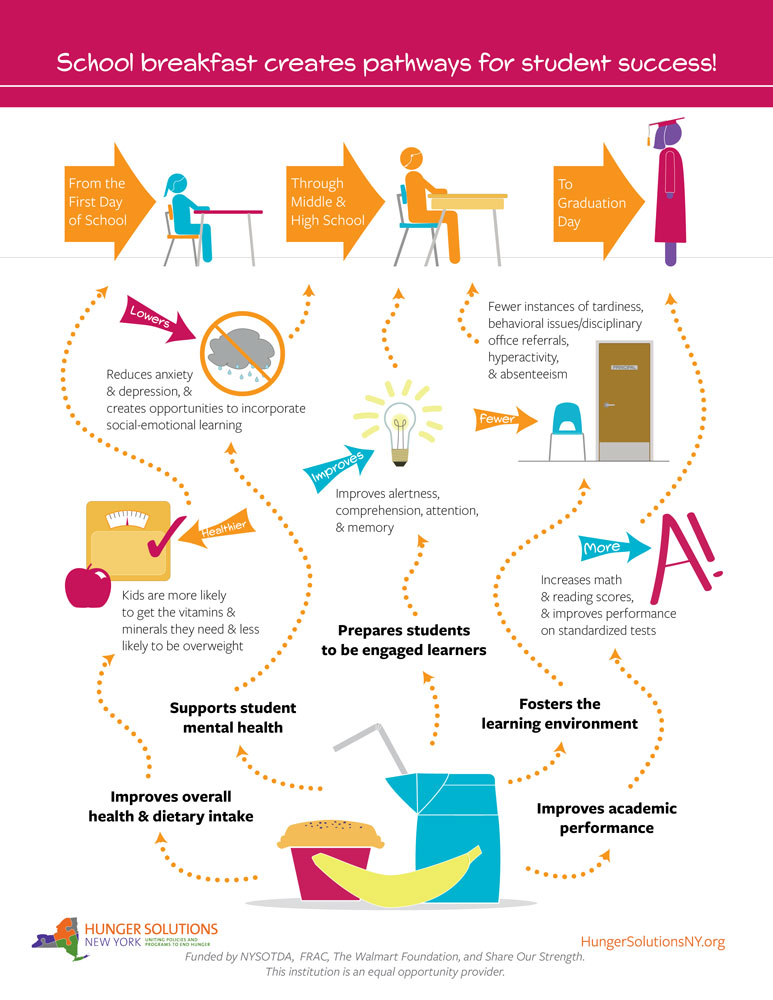New York Implements Bold Legislative Changes to Improve Breakfast Participation
In the 2018–2019 school year, New York implemented legislation focused on building strong school breakfast programs. As a result, New York public schools with 70 percent or more students who were certified for free or reduced-price meals were required to implement breakfast after the bell models. In addition, New York took steps toward expanding free school breakfast to more students by eliminating reduced-price copayments for school meals effective July 1, 2019.
The Food Research & Action Center’s recent report, School Breakfast Scorecard, shows school breakfast participation has continued to surge since these progressive legislative changes went into effect. After the state eliminated the reduced-price co-payment and required breakfast to be served after the start of the school day, over 25,000 additional low-income New York State students ate breakfast each day in the 2019–2020 school year compared to the prior year—a 3.6 percent increase.
While these findings demonstrate tremendous gains in improving school breakfast participation among low-income students, more needs to be done to ensure that the School Breakfast Program regains lost ground caused by the pandemic to reach more children in need.


